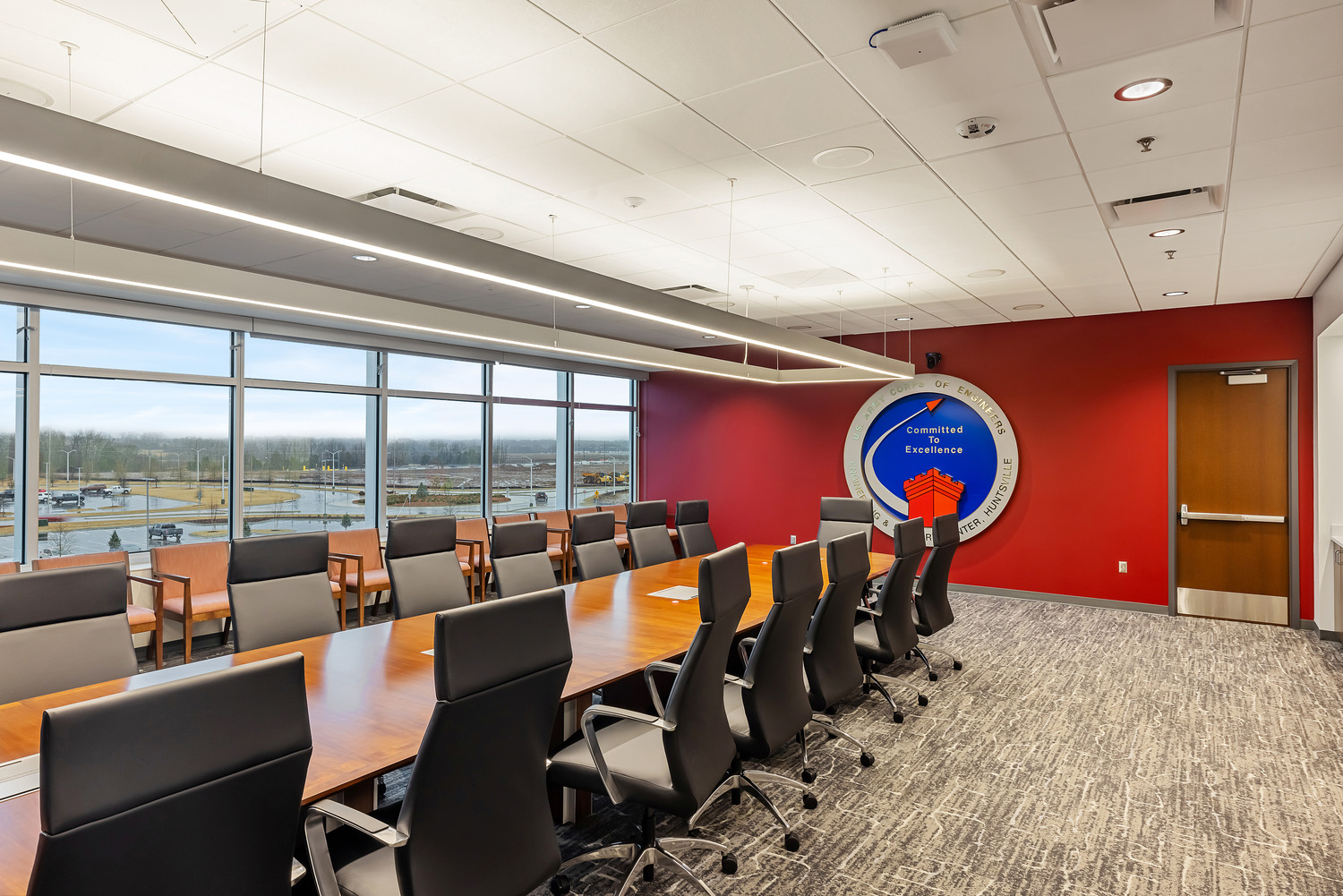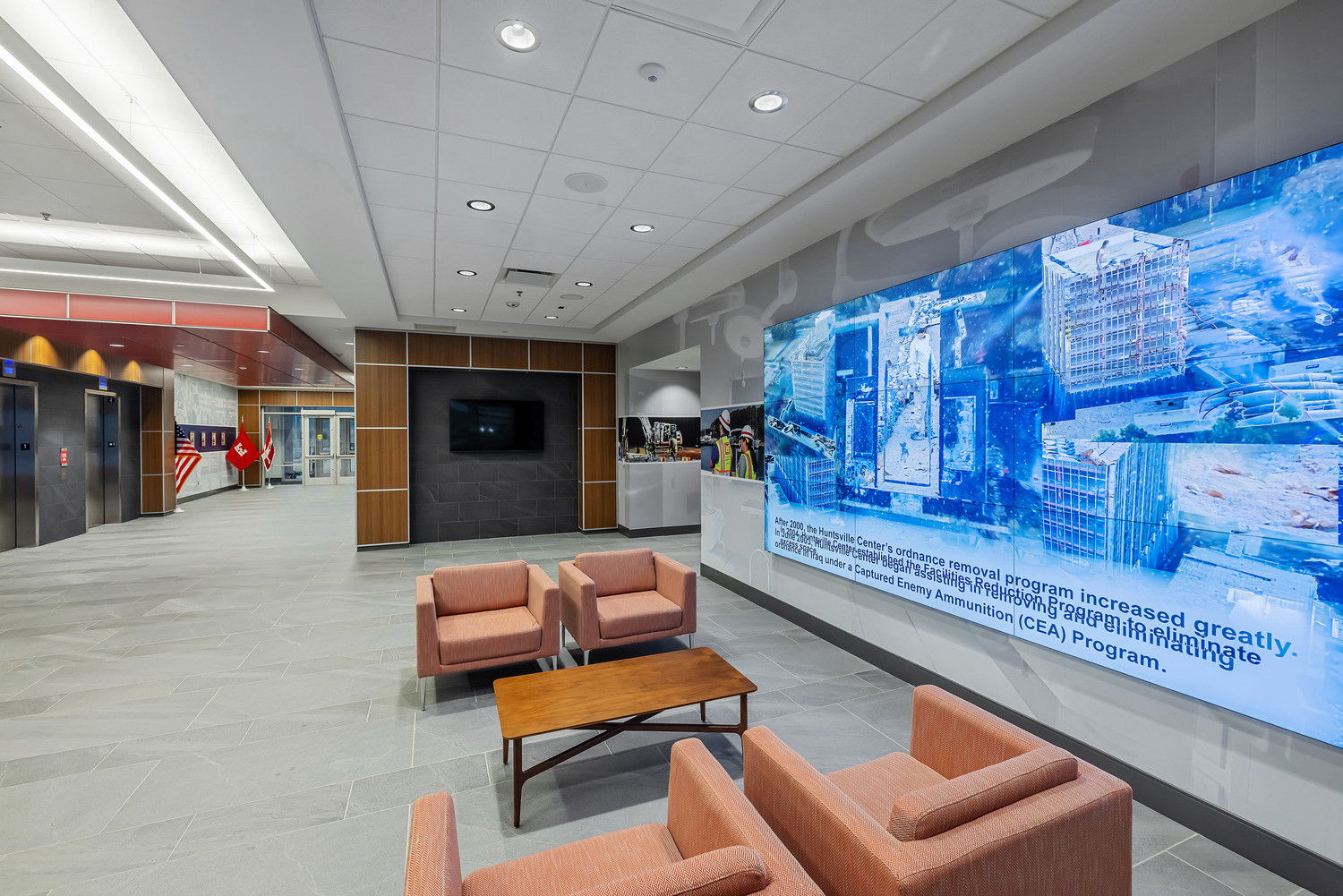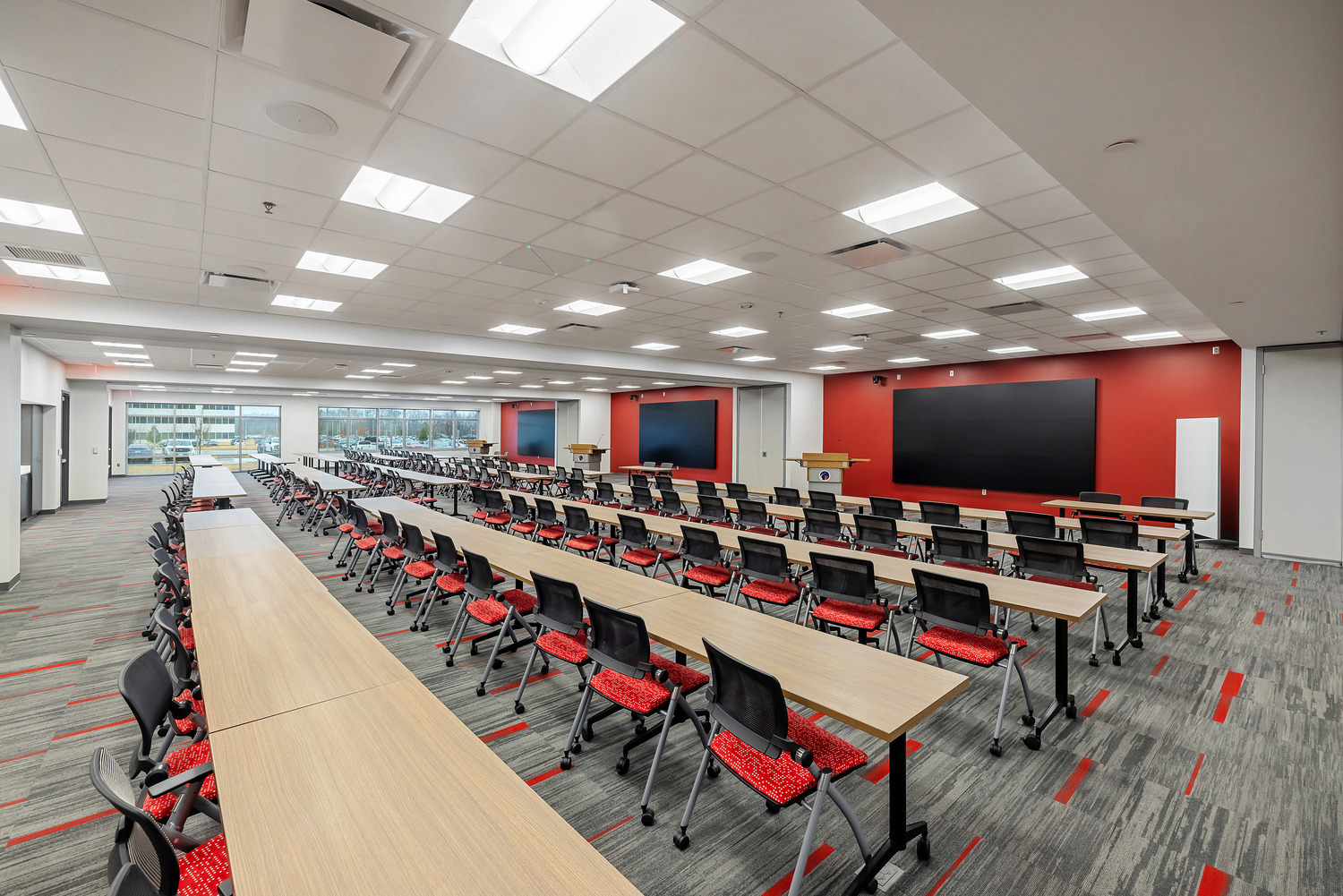Earlier this month, the U.S. Army Engineering and Support Center, on Redstone Arsenal in Huntsville, Ala., opened, enabling the Army Corps of Engineers’ Huntsville Center to consolidate its workforce into one building.
The three-story Redstone Gateway 300 building, which broke ground on Nov. 5, 2021, features 200,000 sf of Class A office space and 15,000 sf of warehouse space that was constructed with concrete tilt-up wall panels. The facility combines private and open office areas, collaborative spaces, a large training room, a dining area, and fitness center, and conference room for the Corps’ commander.
The project represents the fifth multi-story tilt-wall building constructed by Robins & Morton in the office park since 2020. The project is pursuing LEED certification. Robins & Morton, which is based in Birmingham, Ala, was the general contractor, and Nola| Van Peursem Architects, also Alabama-based, was the project architect. COPT Defense Properties was the developer. Last November, Sentar Inc., a woman-owned small business specializing in advanced cyber-intelligence solutions and technology, was awarded a contract for the Center’s PAX Functional Services and Support in such areas as customer training and quality assurance.
Huntsville Center focuses on construction management

The 468-acre Redstone Gateway, with more than 2.3 million sf of mixed-use space either built or under construction, is a joint venture development between COPT Defense Properties and Jim Wilson & Associates. The construction cost for the new Huntsville Center was not disclosed.
Huntsville Center’s origins date back to 1967, as Huntsville Division, whose first offices were in a converted textile mill. The Division has relocated several times since, the latest being into a facility at Thornton Research park in 2018.

The new building allows the Center to consolidate its off-post leases, the Center’s workforce, and provides a more secure environment for the Center’s staff.
According to the Corps’ website, the Huntsville Center’s mission and functions are centered on four key processes: program and project management, engineering and technical services, construction management, and innovative contracting initiatives. The Corps executes more than 3,000 projects annually.
Related Stories
| Mar 26, 2014
Callison launches sustainable design tool with 84 proven strategies
Hybrid ventilation, nighttime cooling, and fuel cell technology are among the dozens of sustainable design techniques profiled by Callison on its new website, Matrix.Callison.com.
| Mar 20, 2014
Common EIFS failures, and how to prevent them
Poor workmanship, impact damage, building movement, and incompatible or unsound substrate are among the major culprits of EIFS problems.
| Mar 17, 2014
Rem Koolhaas explains China's plans for its 'ghost cities'
China's goal, according to Koolhaas, is to de-incentivize migration into already overcrowded cities.
| Mar 12, 2014
14 new ideas for doors and door hardware
From a high-tech classroom lockdown system to an impact-resistant wide-stile door line, BD+C editors present a collection of door and door hardware innovations.
| Feb 27, 2014
Open or private offices? It depends on the business plan
Open layouts are grabbing headlines as a hallmark of the new workplace—think the Google campus or Facebook's headquarters. And for smaller-scale operations, open designs are often lauded for being less expensive than private office plans. But does that mean all offices should have an open layout?
| Feb 21, 2014
Calatrava ordered to pay millions for 'shortcomings in his work' on conference center project
Famed architect Santiago Calatrava must pay 2.9 million euros due to faulty design work on the Palacio de Congresos project in Oviedo, Spain.
| Feb 14, 2014
Crowdsourced Placemaking: How people will help shape architecture
The rise of mobile devices and social media, coupled with the use of advanced survey tools and interactive mapping apps, has created a powerful conduit through which Building Teams can capture real-time data on the public. For the first time, the masses can have a real say in how the built environment around them is formed—that is, if Building Teams are willing to listen.
| Feb 12, 2014
First Look: Futuristic Silicon Valley campus designed to draw tech startups
The curved campus will consist of four different buildings, one exclusively for amenities like a coffee bar, bike shop, and bank.
| Feb 6, 2014
End of the open workplace?
If you’ve been following news about workplace design in the popular media, you might believe that the open workplace has run its course. While there’s no shortage of bad open-plan workplaces, there are two big flaws with the now common claim that openness is bad.
| Jan 30, 2014
The evolving workplace: One designer's inspiration board
"Open office" has been a major buzzword for decades, and like any buzzword, some of the novelty has worn off. I don't believe we will abandon the open office, but I do think we need to focus on providing a dynamic mix of open and closed spaces.

















